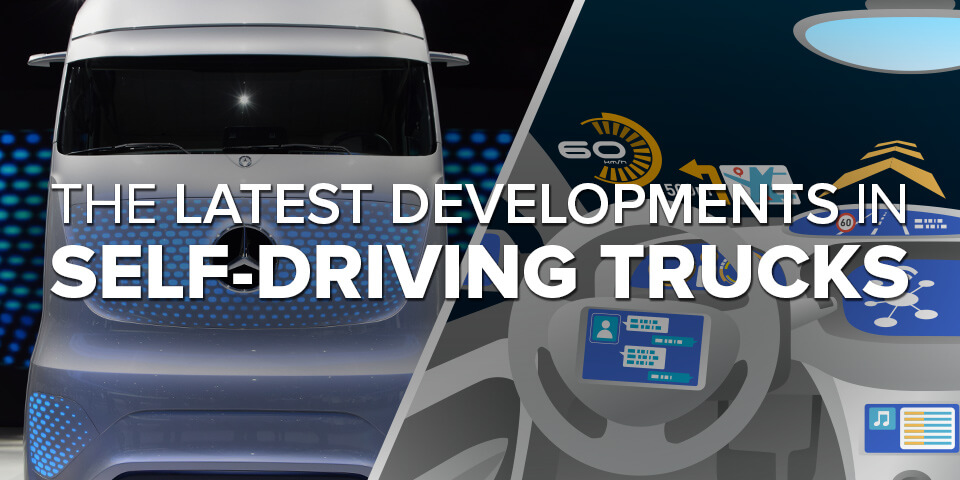Truck Topics

The Latest Developments in Self-Driving Trucks
A fully autonomous truck may be 10 to 20 years down the road. But here are three major "building block" technologies being developed today that offer a glimpse into the future of trucking.
High-Speed Platooning
Video Credit: Peloton Technologies
What do you get when you have two 60,000-pound tractor trailers traveling 65 mph, one behind the other, with only 30 feet separating them? Usually disaster.
But Peloton Technologies has developed software that integrates vehicle-to-vehicle (V2V) communications, radar-based automatic braking systems, and advanced vehicle control algorithms to electronically link pairs of heavy trucks in a platoon formation, where one truck closely follows the other to improve overall convoy fuel economy -- and safety.
Once linked, the trailing truck "sees" the same things as the lead vehicle, while both drivers remain fully engaged and control steering. The platooning trucks maintain consistent speed using adaptive cruise control, which incorporates automatic braking and acceleration based on traffic conditions. And when traffic ahead stops suddenly, Peloton's cooperative braking system senses the danger and automatically applies the brakes on both trucks.
As of July, the Peloton System had logged more than 14,000 platooning miles and been showcased in on-highway demonstrations, government, private and fleet tests in Nevada, Utah, Texas, Ohio, Florida and Michigan. And according to reporting by Transport Topics, fleet trials of the system are expected to take place the first half of 2016.
Highway Pilot
Video Credit: Overdrive
Unveiled in May 2015, the Freightliner Inspiration Truck is the first licensed autonomous commercial truck to operate on an open highway in the U.S. The Highway Pilot system uses stereo camera and radar systems with lane-keeping and collision-prevention functions, with the ability to regulate speed, apply brakes and steer the truck on its own. But the system does require a human driver to initiate passing maneuvers, leave the highway, and change lanes. The driver can deactivate or override the system at any time.
"With the Freightliner Inspiration Truck, drivers can optimize their time on the road while also handling other important logistical tasks, from scheduling to routing," said Richard Howard, Senior Vice President, Sales & Marketing, DTNA in the announcement. "The autonomous vehicle technology not only contributes to improved safety and efficiency, but allows for improved communication through connectivity and integration."
"Eyes" that See When You Can't
Video Credit: Mobileye
With Freightliner's Highway Pilot System, the driver is available to take control when necessary. But what about situations when the driver is suddenly incapacitated from a heart attack, seizure, or falling asleep? What if software could quickly sense driver non-responsiveness in enough time to take over for the driver and bring the vehicle to a safe stop?
According to the Wall Street Journal, that technology is in the works. Israeli-based Mobileye NV, which supplies camera-based assisted driving systems to several automakers, says that by 2018 its technology will be able to seize control of a vehicle in driver emergencies. Mobileye chairman Amnon Shashua said that the driver's condition would likely be monitored through a smart wristband or biometric sensors in the seat.
Mobileye's current generation sensor technology uses an intelligent camera system mounted on the vehicle's dashboard to identify objects in your vehicle's path that may pose threats, such as other vehicles, cyclists or pedestrians. The system continuously measures the distance and relative speeds of these objects to calculate the risk of your vehicle colliding with them.
